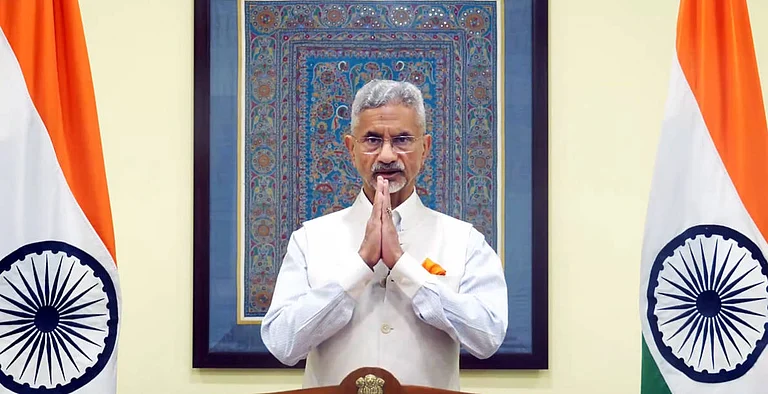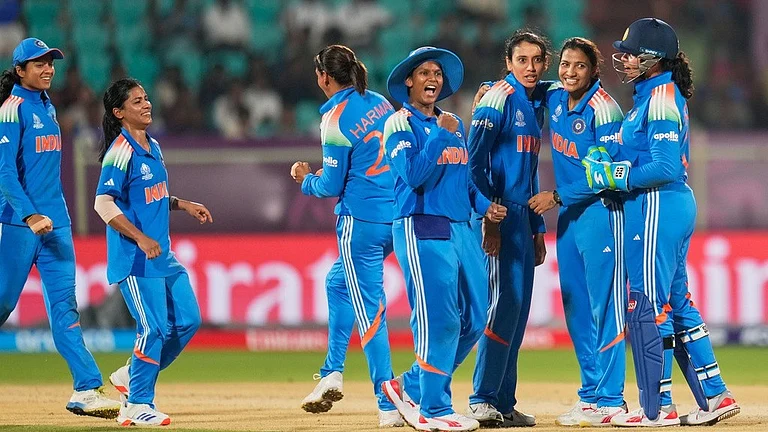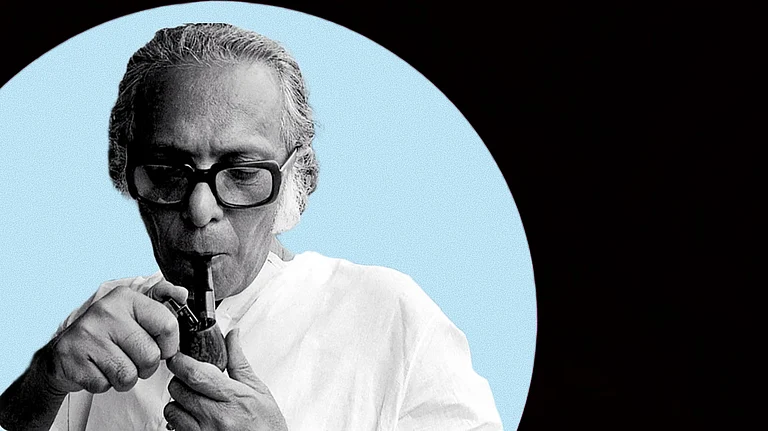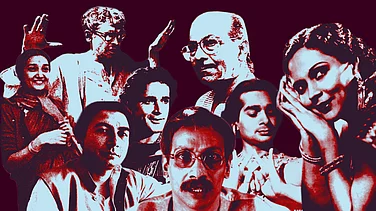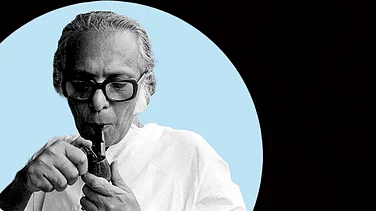In cinema, even before questions about racial bias and colourism in the industry and its narratives are raised, it is the racism inherent to film technology itself that alarms film historians. Scholars like Richard Dyer and Brian Winston critique the racial affinities of the film apparatus when it represents and images ‘black subjects’. They point out that the light sensitivity of film stocks were calibrated and tuned with light skin tones as the norm, rendering dark skin tones outside their ‘pur-view’. Dyer says motion picture lighting technology and approaches to illuminating human figures assume and thus impose a “special affinity between (whites) and light”. The ‘Shirley cards’ that photographers used as the standard for skin tones and light featured only Caucasian models. Obviously, non-white skins did not ‘figure’ in the colour palette of photography and cinema until recently. So, in the republic of cinema, shaped by such technological biases and ruled by racial prejudices, the only rightful subjects were the white.
Chemically and physically, film stocks thus responded only to the glow and gleam of the white body. The technology put huge limitations on lighting, composition, the mise en scene and makeup whenever, or if at all, black and white characters appeared together in a scene. That is, if you set your lights for the black skin, the white body will be bleached out, and if lighted for the white, the black body will be a dark blur. So, it was not just the societal power structures that prohibited the coming together or mixing of races. It was also something inscribed onto the technology of image production itself! The celebration of white was built into it. Interestingly, the lack of film stocks that could capture the different shades and tones of black and brown did not come up as an issue of racial inequality. It was first raised by furniture and dark chocolate manufacturers, who found advertising the full colour range of their products difficult, which in turn, forced companies like Kodak to develop film stocks that are sensitive to non-white colour tones! In television too, it was only in the current century that this issue was seriously addressed—with the rise of superstars like Oprah Winfrey, who introduced cameras equipped to portray the multi-culturality of skin tones.

All of superstar Rajnikanth’s roles from his earliest films are replete with references to his dark skin
From the beginning of cinema, the human figure—the alluring, voluptuous female body and the agile, glowing male body—was at its centre. The audiences gazed at, identified with, envied, adored and imitated these bodies. This fascination with light, effulgence and luminosity as against anything black and dark, easily gelled with moral binaries like light/dark, good/evil, lovable/fearful etc, giving them powerful metaphorical charge. The white, fair skin took over the ‘silver’ screen, usurping the right to embody the dreams and fantasies of humanity, enact its conscience and power, and dramatise its agonies and sufferings. The white bodies reigned over the narrative ethos, and modes and forms of cinematic desire. There, the brown, yellow or black bodies can only be its ‘other’, in shades of the aberrant, abhorrent, alien, perverse, comic, exotic, devilish....
The Colour of Indian Cinema
In Indian cinema too, an obsession/infatuation with fair skin and disgust/disavowal of dark skin reign over its visual imagination about beauty and ugliness, nobility and meanness— it mutates into a full spectrum of corporeal, social and spiritual bias. And India readily offers a fertile ground for the stigma against dark skin: it readily segues into caste prejudices, class differences and regional biases. In Bollywood, north Indians from the dominant castes arrogate to themselves the right to be good—via the mode of fairness—while the other castes, Dalits and southerners (the ‘Madrasis’) are relegated to the realm of the dark other. The latter can only remain, enact and embody the outsider/alien, abnormal/divergent, comic/ludicrous, against which the former sets itself up as the norm, the given, the rule. As Dyer says, what makes it difficult to pinpoint and critique whiteness (and in the Indian context, both fairness and Brahminism) is its invisibility through a sheer ubiquity and taken-for-grantedness. White is the normal, standard, ideal, given, and natural. It just is. As Dyer says, “…as long as white people are not racially seen and named, they function as a human norm. Other people are raced, we are just people.”

Kamal Hasan’s fair skin empowered him to distort his body; right, Srinivasan portrayed the identity conflicts of a dark-skinned man
So, all across the cinemas of India, one can see the adoration of the fair-skinned bodies as beautiful, virtuous and heroic, and the abhorrence of the dark-skinned as its evil or perverse other. This narrative world of the caste unconscious is founded upon and nurtured through endless reiteration of the darker shades of skin as ugliness, cruelty, poverty, destitution, evilness and immorality. They project and magnify white egos through gross physical juxtapositions, direct insults and expletives in the form of jokes. Hence, the ubiquity of dark sidekicks, the receptacles of abuse who shadow fair heroes and heroines, and dark villains who, through defeat and decimation, vindicate the inherent supremacy of the white.
Two Iconic Bodies in Tamil Cinema
Coming to the South, skin colour was always an obsession with Tamil cinema, evoked time and again through its choice and combination of actors and actresses, and references in jokes and songs. Interestingly there is some sort of cross-fascination between North and South at work here. If Bollywood earlier imported south Indian actresses to play heroines to its macho heroes, Tamil cinema soon developed an obsession with fair, north Indian actresses. Since the 1990s, this practice seems less prevalent in Hindi cinema, but it became the norm in Tamil blockbusters. While ‘local’ actresses played the tragic heroines associated with tradition, village and family, north Indian fairies were considered ideal to embody and enact ‘modern’, urban, pre-marital romances. As for the heroes, they were always meant to be ‘indigenous’, and dark skin was not at all a rarity. These male heroes represent the agonising, ambivalent conflicts of male desires and fantasies, and could be divided with regard to pride, anxieties and complexes arising out of one’s skin colour, but they all wore the same hides in their relentless obsession with the fair female body.
The careers of two iconic stars in Tamil cinema—Kamalahaasan and Rajnikanth—fascinatingly represent the imaginations and fantasies, desires and nightmares of the skin. Rajnikanth’s long, glittering career also reflects Tamil cinema’s agonising and troubled relationship with the dark skin. The evolution of his screen persona from being the dark, diabolic villain to the macho, superhuman superstar is replete with references to dark skin. Interesting too is the parallels with the career of the fair and Brahminical hero-body of Kamal, who entered the scene at the same time. Their experiments with body-truth make a very interesting contrast: Rajnikanth characters are tied to their skin, always having to extol, curse, celebrate and show it off. For instance, in Shivaji, he bleaches his face to suit the heroine’s desire, while in Yenthiran he transcends it to turn into a robot. Even in Kaala, where blackness is celebrated in all its manifestations—physical, metaphorical and sartorial—it has to garner everything…physical power, mob support, a long history of suffering, and a very fair lover…to justify and legitimise itself. In contrast, Rajni’s other, Kamal, seems obsessed with defiling, deranging and distorting his fair body: in his career, he has portrayed an array of characters who are physically deformed or mentally challenged; he dwarfs and mauls, ages and shrivels, bloats and shrinks his body to embody and engulf a whole range of human conditions and emotions. Only a ‘neutral’ (read fair/savarna) body has such privileges of transmogrifications and transformations, for they are ‘open’ to the world like a neutral medium. In contrast, for the dark-skinned Rajni, there are no such bodily ‘choices’, as it is always already bound with meaning, closed and thick in its significations.
Black Skins, White Minds
“The cruel God born from the Lotus, while creating my body Added more dark ink in the clay, that brute!’, said Venmani Nambudiri, a 19th century Brahmin poet writing in Malayalam. This lament shows that the skin colour complex has a long lineage, haunting even a privileged savarna male to curse the creator Himself!
The overbearing concerns of Malayalam cinema in the post-Independence decades, which was under the influence of progressive theatre and literary movements of the time, were more about class issues than skin tones. Moreover, in black-and-white era, dark skins rarely stood out in the mixed caste/class milieu of those narratives. And you find several actors and actresses of varying skin tones like Sathyan, Prem Nazir, Sarada, Sheela, Miss Kumari, Padmini and Kottarakkara Sreedharan Nair playing roles of equal importance. Social realism being the norm, and class inequality, poverty, the rise of the free individual and nuclear family emerging as the basic narrative concerns, skin colour did not take sides. For instance, Sathyan—one of the most versatile of actors of the 1950s and ’60s—was dark-skinned, while Ummer, who usually played villainous, treacherous, upper-class roles, was fair. Nobody seemed to mind that. With the entry of colour in cinema, skin tones, especially in the case of heroines, became more crucial. But even then, there were a number of actors and actresses whose complexions could not be described as ‘fair’—Sobha, Jalaja, Subha, Sudheer, Venu Nagavally, Ratheesh, Soman etc—playing in major roles. But this predominance of the mid-range in the skin colour palette did not mean Malayalam cinema was neutral or unbiased towards dark skin. Just like in Kerala society, caste/colour prejudices always worked in devious and subterranean ways. Ayyappa Panicker sums it up succinctly in one of his poems paraphrasing Sree Narayana Guru, the great social reformer: “Don’t tell caste, don’t ask caste, but don’t do anything forgetting it”.
The careers of two actors—Srinivasan and Kalabhavan Mani—may help us get under the skin of mainstream Malayalam cinema. Though both played the dark ‘other’ to the fair, savarna hero, they narrativised and strategised their skin colour in totally different ways. While Srinivasan’s characters embodied the issue of caste/colour in the pre- and post-Mandal climate of polemical debates about reservations and ‘merit’, Mani confronted the issue head-on, flaunting his body, acting skills and voice to carve a creative space of his own within the toxic elite-caste atmosphere and narrative milieu of Malayalam cinema.
In the several roles Srinivasan played as sidekick to Mohanlal, he portrayed the dilemmas and identity conflicts of a dark-skinned man trying to sneak, force or coax his way into the world of his fair, savarna, ‘progressive’ counterpart. Even when Srinivasan’s characters are educated, employed and urban, the moment his fair, elite-caste friend enters the scene, all his economic, educational and class qualifications are made to appear unearned, undeserved and out of place. His position seems unsuitable, his status dubious, and his claims to equality and respect preposterous. Even his romance with a fair woman turns into comedy.
In contrast, Kalabhavan Mani fought his way through the system to get to the top. From early comic, sidekick roles shadowing the fair hero—whose elite caste is the stated or unstated ‘neutral’ ground—Mani graduated into a variety of serious, tragic and evil roles. In the decade preceding his sudden and tragic death in 2016, he donned several hero roles, vying with the superstars in terms of punch dialogues, action scenes and machismo. Never flinching away from his caste roots and skin colour, there was a certain audacity and irrepressible energy to his performances that was unparalleled in Malayalam cinema. Mani’s popularity, initially as a mimicry artist and later as a singer and onstage performer, gave his screen persona an additional charm and external momentum. If he had lived longer, Mani surely would have essayed more varied and complex roles under the ‘new-gen’ filmmakers, who are more sensitive to skin colour and casteism.
But in contemporary Indian cinema, there is a definite change in the air, with the entry of a host of young talents all over India, especially in Marathi, Tamil and Malayalam. Their films shun ‘white rules’ and frontally deal with caste inequality and oppression. It seems dark skin is finally beginning to speak up, speak out—shedding the skin of imposed shame. It is taking its place in the Indian sun by appearing as itself.
ALSO READ
(C.S. Venkiteswaran is an award-winning film scholar, critic and teacher.)







